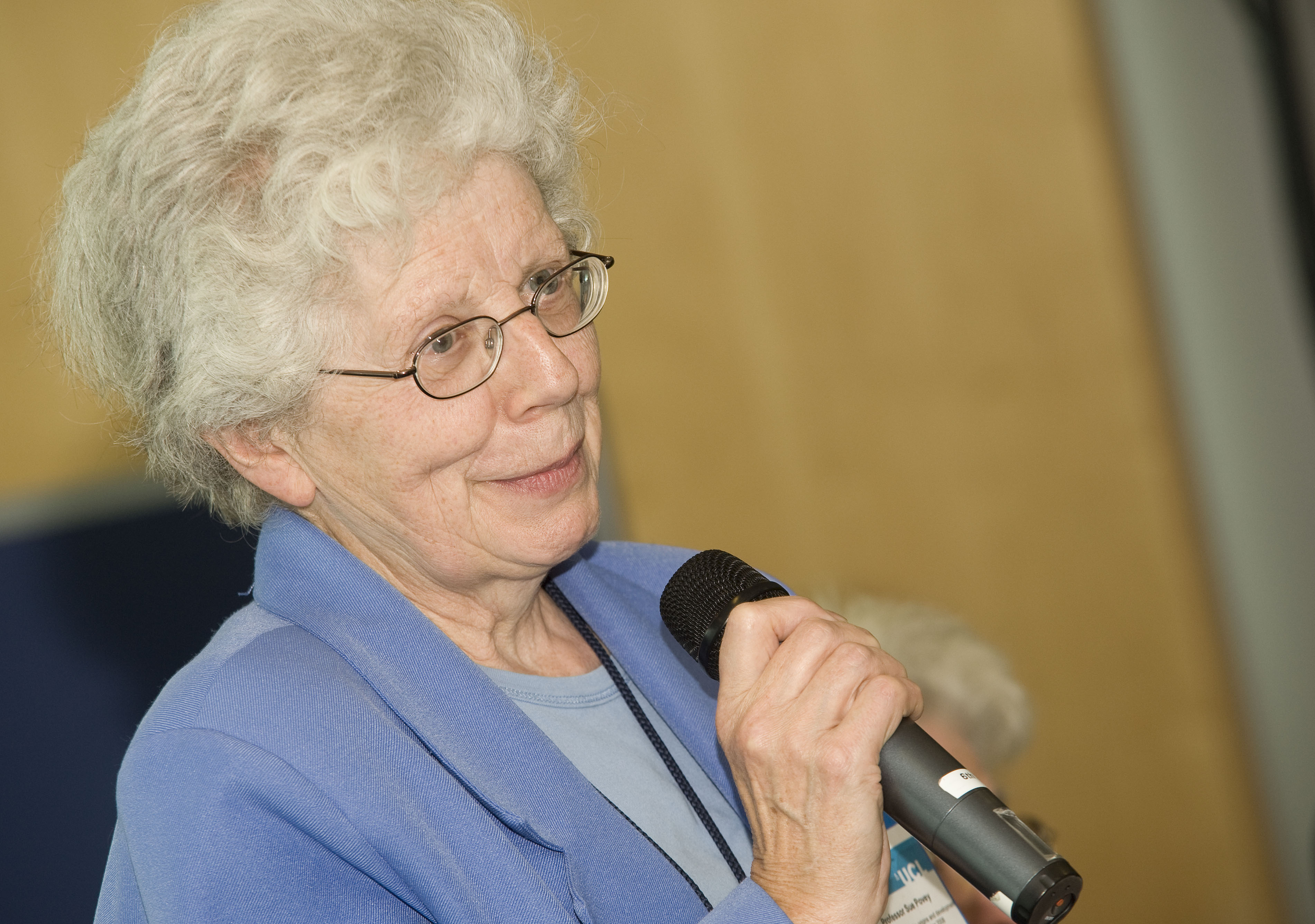My background is in medicine although I only practised for two years, writes Professor Sue Povey, Geneticist at University College London.
Then I moved to the Medical Research Council Human Biochemical Genetics unit at University College London. And while I was there I started to do gene mapping. Between the 1970s and 1980 at least one gene had been found on every chromosome – we’d not got very far! But by 1985 people were just beginning to think you might find the faulty gene in an inherited disease by finding the chromosome involved.
My route towards TSC was interesting. I was at UCL still and had gone to a seminar being given by John Osborne, who, I believe, is still active at the TS clinic in Bath. He came to UCL and was pleading for someone to start working on TSC. And this caught my imagination. So I got into it in 1985. And at that time Malcolm Ferguson–Smith in Glasgow had some data on the ABO blood group in TSC.
We were sent details of 32 families and tested them for biochemical markers. We pooled all our results with Glasgow and quite quickly we found some families linked to ABO on Chromosome 9 and others to AK1, also on chromosome 9. These were our first results and we published them. About half the families were not informative for either of these markers. Soon after our publication we discovered 5 people in another family with TSC who simply could not fit these results. It was then that we had to think that there was more than one gene involved with TSC. It was about 1993 when it became clear that one gene relating to TSC is on Chromosome 9 and one on Chromosome 16.
We decided on concentrate on Chromosome 9, while Professor Julian Sampson in Cardiff concentrated on Chromosome 16. We started to do some hard positional cloning. We reconstructed a section (1.5 million bases) of normal Chromosome 9 within which was the TSC1 gene. And in the early part of 1997 we gave all our clones to our collaborators at the Whitehead Institute. We were now working in a consortium with people in USA, Holland, Poland, Bath, Cambridge and Cardiff.
The sequencing at the Whitehead Institute was all part of the Human Genome Project – anything they found in one day had to be put on the web for the world that same night. It was very competitive. Amazingly, my group did find the orientation of the 1.5 million bases of DNA which helped us to know which direction to look for the TSC1 gene. This information was shared with other members of our consortium.
Shortly before Easter 1997, Professor David Kwiatkowski informed our consortium that he had found a lot of changes in one particular gene. These were single base changes in many of the patients. He confirmed that his initial finding on a Thursday was repeated over the weekend and he informed us all on a Monday!!! Some of these researchers, well, they don’t seem to go to sleep, ever! As a result, all my group abandoned their Easter holidays to stay on and pursue this line of research. We had to keep quiet about it until publication which was very difficult! We had no idea what this gene was doing – but we did know that if it wasn’t working you got TSC. We were very, very excited. And by the next week we had found a change in half of our patients. This made the BBC news in 1997 where I was interviewed. A lot of people were involved in this research and our paper was published in August 1997.
As for particularly exciting moments following the discovery of both TSC genes – in a way some of these things were quite small, really. I remember one family who had a mutation in the TSC1 gene except one individual who had no signs or symptoms of TSC but then had a severely affected child. This was a situation that was interpreted as non-penetrance which had led to members of other families being nervous about facing a similar situation. We found that the child had a new mutation in the TSC2 gene. This was very unlucky for this family but reassuring for relatives of other patients without TSC signs as their risk of having such a child is very small and similar to that of the general population. I wanted the title of the publication for this case to be “Good news for relatives of patients with TSC”, but I was overruled by the Lancet.
Another exciting moment was when we started our database which is open to the world. Many genetics labs contribute to it, look at it and use it.
Rosemary is magnificent with me at meetings. I have a very bad case of face blindness – I cannot remember what people look like who I have known for over 20 years. Without Rosemary I have to try to work out who they are by what they say, but when she is there she will keep on reminding me who they are. In fact, I don’t think I would go to any meetings unless Rosemary was there!
My swansong: I am in the same constituency as the Speaker, John Bercow. I went to a tea and buns function in the House of Commons and I realised that Greg Mulholland, the former MP, was trying to get a question asked during PM’s Questions about Everolimus for inoperable SEGA. So I wrote a rather short, sharp letter to John Bercow about this very thing. And sure enough the question did not come up in the ballot for that day’s PMQs. But at the very end of the session, John Bercow said ‘We have an extra question’ and that was when the question was asked. As well as getting the drug prescribed, at the very least this put TSC a bit more in the public spotlight. I said to John Bercow, please do us all a favour and explain that TSC is not to be mixed up with tuberculosis, or multiple sclerosis!




